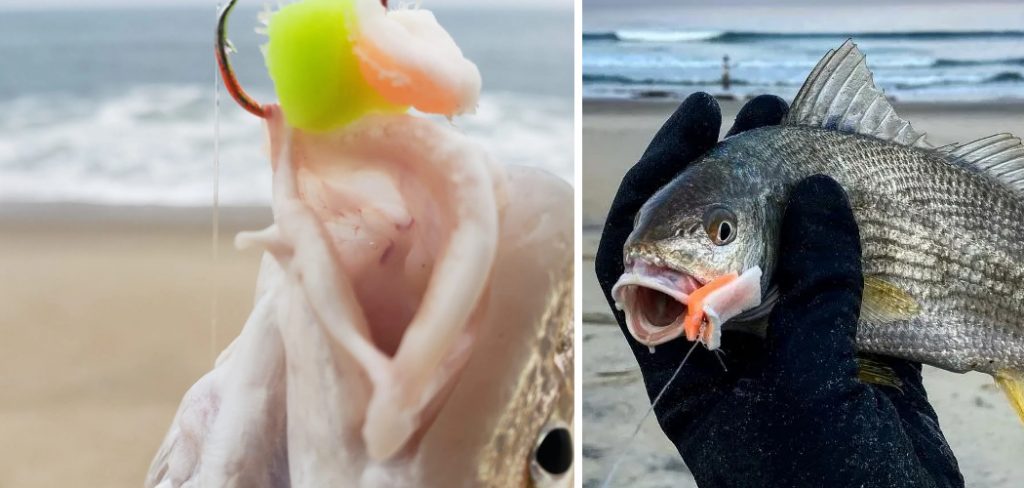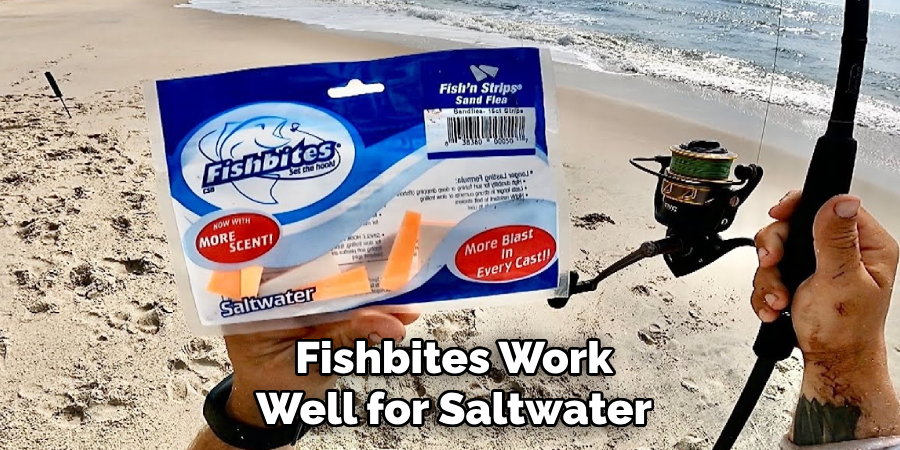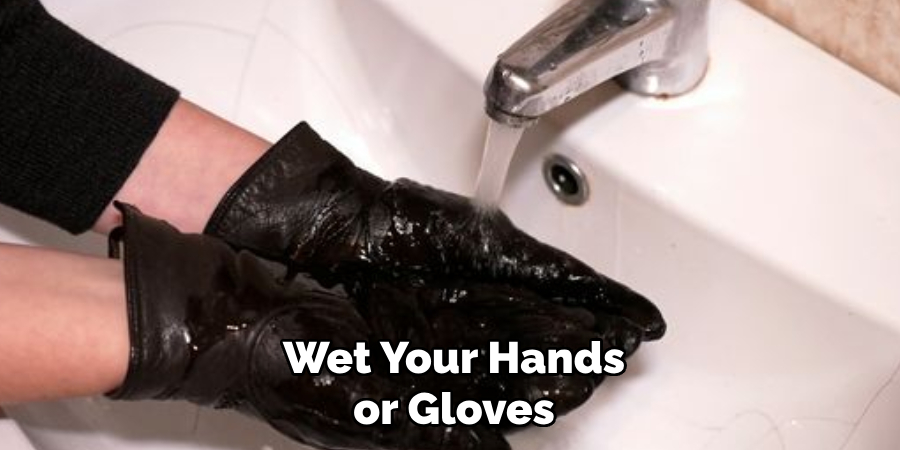Are you tired of struggling with live bait? Are you tired of constantly having to rebait your hook? Look no further than fishbites!
Fishbites are a popular and effective type of bait used by anglers to attract a variety of fish species. Known for their convenience and durability, Fishbites come in pre-cut strips or sheets that are easy to use and handle. They are designed to mimic natural bait, infused with scents and flavors that fish find irresistible. Whether you are a beginner or an experienced angler, Fishbites offers a hassle-free way to enhance your fishing success.

This guide on how to use fishbites will walk you through the basic steps and tips for using Fishbites effectively on your next fishing trip. Let’s get started!
What Are the Benefits of Using Fishbites?
Before we dive into how to use fishbites, let’s first understand why they are a popular choice among anglers.
- Convenience: As mentioned earlier, Fishbites come in pre-cut strips or sheets that are easy to handle and have a long shelf life. This eliminates the need for constant rebaiting and reduces the mess of using live bait.
- Durability: Unlike live bait that can easily get ripped off your hook, Fishbites are designed to last longer. You can cast your line without worrying about constantly checking and rebaiting your hook.
- Versatility: Fishbites work well for saltwater and freshwater fishing, making them a versatile option for anglers. They also come in various sizes and flavors, allowing you to customize your bait according to your target species.
- Attractiveness: Fishbites are infused with scents and flavors that mimic natural bait, making them highly attractive to fish. This increases your chances of getting a bite and ultimately catching more fish.

These benefits make Fishbites a popular and practical choice for all types of anglers. Now, let’s move on to how you can use them.
What Will You Need?
To use Fishbites, you will need the following items:
- Fishbites: You can purchase Fishbites at most bait and tackle shops or online. They come in a variety of sizes and flavors to choose from.
- Fishing rod and reel: Make sure your fishing equipment suits the type of fish you are targeting.
- Hook: The hook size should match the size of the Fishbite strip or sheet you are using.
Once you have all the necessary items, it’s time to get started!
9 Easy Steps on How to Use Fishbites
Step 1. Cut the Fishbites:
Using a sharp pair of scissors or a knife, cut the Fishbites into strips or small pieces that are appropriate for your fishing needs. The size of the pieces will depend on the type of fish you’re targeting and the hook you’re using.
Larger pieces may work better for bigger fish species, while smaller cuts are ideal for smaller fish. It’s important to ensure clean, even cuts to make the bait easier to handle and more effective when secured to the hook. Avoid cutting pieces that are too large, as this may affect the bait’s ability to stay on the hook properly.
Step 2. Attach the Fishbites to the Hook:
Take the cut piece of Fishbites and carefully thread it onto the hook. Slide the bait up the hook, ensuring it is securely in place, exposing the hook’s point. This is important as it provides a good hook set when a fish bites.
Position the Fishbites to cover enough of the hook to entice the fish without blocking the point. Adjust as needed to ensure it holds firmly and doesn’t slip off during casting or in the water.
Step 3. Cast Your Line Into the Water:
Once the Fishbites are securely attached to the hook, it’s time to cast your line. Choose a spot where fish are likely to be present, such as near underwater structures, vegetation, or areas with visible fish activity. Use a smooth and controlled motion to cast your line into the water, ensuring it reaches the desired location.

Allow the bait to settle, and watch your line for any signs of movement or bites. Be patient, as it may take some time for fish to be attracted to the bait.
Step 4. Monitor and Set the Hook:
Once your line is in the water, carefully monitor for any signs of fish activity. Look for movements or tugs on the line that indicate a potential bite. When you feel a tug or see the line moving, remain calm and wait for a stronger pull to ensure the fish has taken the bait.
At this point, quickly and firmly pull back on the rod to set the hook, ensuring the hook embeds securely in the fish’s mouth. Avoid jerking too hard, as this could scare the fish away or cause the line to break.
Step 5. Reel in Your Catch:
After successfully setting the hook, begin reeling in the fish using a steady and controlled motion. Keep tension on the line to prevent the fish from escaping, but avoid reeling too quickly, as this could cause stress on the line or rod. If the fish resists and pulls hard, allow it to tire itself out before continuing to reel.
Use the rod to guide the fish toward you, maintaining a gentle yet firm grip. Once the fish is close enough, use a net to lift it out of the water safely. Handle the fish carefully to ensure its well-being if you plan to release it.
Step 6. Properly Handle and Release or Keep the Fish:
Once you have caught the fish, decide whether to keep it or release it back into the water. If you intend to release it, gently handle the fish and minimize the time it is out of water. Wet your hands or gloves before touching the fish to avoid damaging its protective slime layer, which helps prevent infections.

Remove the hook carefully using pliers or a hook remover, and return the fish to the water as quickly as possible, ensuring it is upright and can swim away on its own.
Step 7. Clean and Store Your Gear:
After a successful fishing trip, cleaning and storing your equipment correctly is essential. Rinse your rod, reel, and tackle with fresh water to remove dirt, salt, or debris that may have accumulated during use.
Ensure the reel is dried thoroughly to prevent rust or corrosion. Check your line for signs of wear or damage and replace it if necessary. Organize your tackle box, ensuring hooks, lures, and other tools are stored securely. Proper gear maintenance will prolong its lifespan and ensure it’s ready for future trips.
Step 8. Follow Local Regulations and Guidelines:
Responsible fishing involves adhering to local regulations and guidelines to protect fish populations and habitats. Before your trip, research the fishing rules in your area, including size and bag limits, fishing seasons, and permitted tackle.
Ensure you have the appropriate fishing license or permit, as the law requires. Practice ethical fishing by avoiding restricted areas and respecting catch-and-release zones. By following these guidelines, you contribute to the sustainability of aquatic ecosystems and help preserve fishing opportunities for future generations.
Step 9. Practice Safe Handling of Fish:
When catching fish, it is crucial to handle them with care to minimize harm and increase their chances of survival if released. Use wet hands or a damp cloth to avoid damaging the fish’s protective slime coating.
Avoid squeezing the fish or inserting fingers near the gills, as these areas are particularly sensitive. If using a hook, remove it gently with the proper tools, such as pliers or a hook remover. For fish you intend to release, limit the time they spend out of water and ensure they are fully revived before letting them swim away. Prioritizing safe handling practices not only promotes the humane treatment of fish but also supports the health of aquatic ecosystems.
By following these steps and guidelines, you can increase your chances of a successful fishing trip while also promoting ethical and responsible fishing practices.
5 Things You Should Avoid
- Using Expired Fishbites: Always check the expiration date before using Fishbites. Expired bait can lose its effectiveness and may fail to attract fish, resulting in a less productive fishing trip.
- Storing Fishbites Improperly: Avoid exposing Fishbites to extreme heat or direct sunlight for prolonged periods, as it can cause them to dry out and become less appealing to fish. Store them in a cool, dry place to maintain their quality and effectiveness.
- Using the Wrong Size or Type: Fish species respond to different bait sizes and types. Avoid using Fishbites that are too large or too small for your target fish, as this could deter bites and reduce your chances of success.
- Overloading the Hook: Don’t overload your hook with too much Fishbites. Excessive bait can hinder your hook’s effectiveness and make it more difficult for fish to bite correctly.
- Ignoring Water Conditions: Avoid using Fishbites without considering the water temperature, clarity, or salinity. These factors can impact the fish’s behavior and the bait’s effectiveness. Adapt your approach based on the environmental conditions for the best results.

Conclusion
How to use Fishbites can be an incredibly effective way to improve your fishing success when used correctly.
You can greatly enhance your chances of attracting fish by choosing the right size and type of bait, properly securing it to your hook, and considering environmental factors such as water conditions. Additionally, proper storage and handling ensure that your Fishbites remain in optimal condition for use. Avoid common mistakes like overloading your hook or neglecting the preferences of your target species.
With thoughtful preparation and attention to detail, Fishbites can become a reliable and versatile addition to your fishing toolkit.
About the Author
Jennifer Branett is the author of Fishy Kayak and an expert in fish-related fields, with over 10 years of experience. Her work blends passion for fishing with a commitment to conservation.
Educational Background
Degree: Bachelor’s in Marine Biology
Institution: University of California, Santa Barbara
Specializations: Aquatic ecosystems, fish behavior, and sustainable practices
Professional Experience
Conservation Projects:
Collaborated with local organizations to restore aquatic habitats
Developed educational programs on sustainable fishing practices
Publications:
Authored articles for fishing magazines and environmental journals
Featured speaker at fishing expos and conservation conferences
Key Areas of Expertise
Fishing Techniques:
Kayak fishing strategies
Freshwater and saltwater fishing methods
Environmental Stewardship:
Advocacy for sustainable fishing
Promoting biodiversity in aquatic environments
Awards and Recognition
Recipient of the [Specific Award Name] for contributions to marine conservation
Recognized as a leading voice in the fishing community by [Organization/Publication Name]
Community Engagement
Workshops and Seminars:
Regularly hosts events to educate anglers on sustainable practices
Engages with youth programs to inspire the next generation of fishers
Online Presence:
Maintains an active blog sharing tips, stories, and conservation efforts
Engages with followers on social media to promote fishing ethics
Personal Interests
Enjoys kayaking in scenic locations
Passionate about photography, capturing the beauty of nature
Advocates for local conservation efforts in her community
